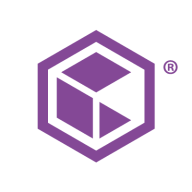

Commvault Cloud and Acronis Disaster Recovery compete in the backup and disaster recovery category. Commvault Cloud seems to have the upper hand due to its extensive cloud integration and hybrid data management capabilities.
Features: Commvault Cloud excels in backup and disaster recovery capabilities with extensive data management across hybrid and multi-cloud environments. It is known for its cost efficiency in long-term data retention and seamless integration with cloud services. Acronis Disaster Recovery is recognized for its cost-effective backup solutions and reliable performance.
Room for Improvement: Commvault Cloud faces challenges with complexity and a steep learning curve. The interface requires further enhancements for user-friendliness. Acronis could improve by incorporating real-time backup features and enhancing cross-platform support for better flexibility.
Ease of Deployment and Customer Service: Commvault Cloud is adaptable to on-premises and hybrid environments, although it has a steep learning curve. Its customer service is highly rated for timely and effective support. Acronis is praised for good customer service but needs improvements in localization and responsiveness.
Pricing and ROI: Commvault Cloud is not the cheapest but offers comprehensive features that justify its price, with users reporting significant ROI through operational efficiencies. Acronis is seen as a more cost-effective solution for specific environments with competitive pricing and notable ROI in disaster recovery scenarios. Both platforms provide value, but their pricing structures vary to cater to different scales and priorities.
My customers are finding value in Acronis Disaster Recovery, as they are happy with the tool and continue to use the services after facing many situations where they found it useful and got good returns on their investment.
Acronis regularly introduces new features to meet customer needs, which can lead to efficiencies.
A high-level technical team should be accessible swiftly to minimize customer downtime.
They were experts regarding Acronis support for any kind of issues.
We face issues connecting with the account manager, which needs to be improved.
The number of people who know Commvault Cloud is lesser compared to Veeam.
Customer support has very closed departments, requiring us to shuffle between them to get one thing done because representatives have limited accessibility.
It is easy to scale; you can directly add licenses for scalability.
The scalability of Acronis Disaster Recovery is good, and I would rate it an eight out of ten.
We have not experienced any downtime, bugs, or glitches.
I have not faced any downtimes with Commvault Cloud.
Commvault Cloud is highly stable, and I would rate it a ten out of ten.
For the backup to compete in the enterprise market, there must be improvements.
If a server is completely offline and destroyed, the system should offer an intelligent response, providing options to start recovery without requiring manual intervention from engineers.
They could also enhance endpoint security by integrating EDR within the security framework.
I feel that the support is not yet up to the mark, with not enough professional engineers to provide assistance.
The price for Acronis Disaster Recovery is fair from the perspective of features, but for Indian customers and in light of the competition, it would be better if the price were a little lower to pitch services more effectively.
Acronis Disaster Recovery is fairly priced.
The pricing for Acronis products has increased by 10% to 15% over the past few years, making it challenging for existing customers to accommodate the rising costs annually.
Commvault Cloud is expensive, and there is room for the price to be 10-15 percent lower than what they are charging currently.
For data recovery, when we lose a server, we are able to restore it in place with the click of a button.
The ability to automate the backup solution and recover entire mailboxes or even granular-level emails is very good for restoration and backup.
With the help of Acronis Disaster Recovery automation, we helped them to recover data multiple times in accidental deletion cases, making it a very useful tool for them.
Other features include endpoint solutions, integration with Office 365, ransomware protection, archival for long-term retention, and no ingress or egress charges.
We can back up unlimited TBs due to our per node license.
| Product | Market Share (%) |
|---|---|
| Commvault Cloud | 13.2% |
| Acronis Disaster Recovery | 0.4% |
| Other | 86.4% |


| Company Size | Count |
|---|---|
| Small Business | 13 |
| Midsize Enterprise | 1 |
| Large Enterprise | 3 |
| Company Size | Count |
|---|---|
| Small Business | 57 |
| Midsize Enterprise | 24 |
| Large Enterprise | 81 |
Acronis Disaster Recovery Service is a hybrid cloud, all-in-one, IT continuity solution that protects and restores your data and servers in the event of a natural or man-made disaster. Leveraging the power of the Acronis AnyData Engine, Acronis Disaster Recovery Service can reliably recover your servers or entire data centers without the need for you to invest in duplicate systems or additional staff.
Acronis Disaster Recovery Service can reliably recover your servers or entire data centers without the need for your organization to invest in duplicate systems or additional staff. Providing flexible recovery time objective (RTO) options, Acronis Disaster Recovery Service combines the high performance and shortest recovery time of a local appliance with the low cost, predictability, and accessibility of a virtual private cloud.
Commvault Cloud is the ultimate cyber resilience platform built to meet the demands of the hybrid
enterprise. Beyond its core functionality of data backup and recovery across diverse workloads, including applications, databases, virtual machines, and files, Commvault Cloud stands out as a robust defense against ransomware. Going beyond backup, the platform integrates advanced data security features such as encryption, access control, and threat detection, safeguarding against unauthorized access and cyber threats.
With tools for data management, classification, and migration, businesses can optimize storage costs, enhance accessibility, and comply with regulations seamlessly. Boasting cloud integration with major providers like AWS, Azure, and Google Cloud, Commvault Cloud leverages the scalability and flexibility of the cloud for comprehensive data protection and management. The platform's automation capabilities streamline tasks, and its reporting and analytics features provide valuable insights into data usage, potential risks, and optimization strategies. Commvault Cloud is not just a security tool; it is a key component of cyber resilience, enabling organizations to not only protect against cyberattacks but also recover swiftly and minimize the impact of incidents. Elevate your cyber resilience strategy with Commvault Cloud.
We monitor all Disaster Recovery (DR) Software reviews to prevent fraudulent reviews and keep review quality high. We do not post reviews by company employees or direct competitors. We validate each review for authenticity via cross-reference with LinkedIn, and personal follow-up with the reviewer when necessary.